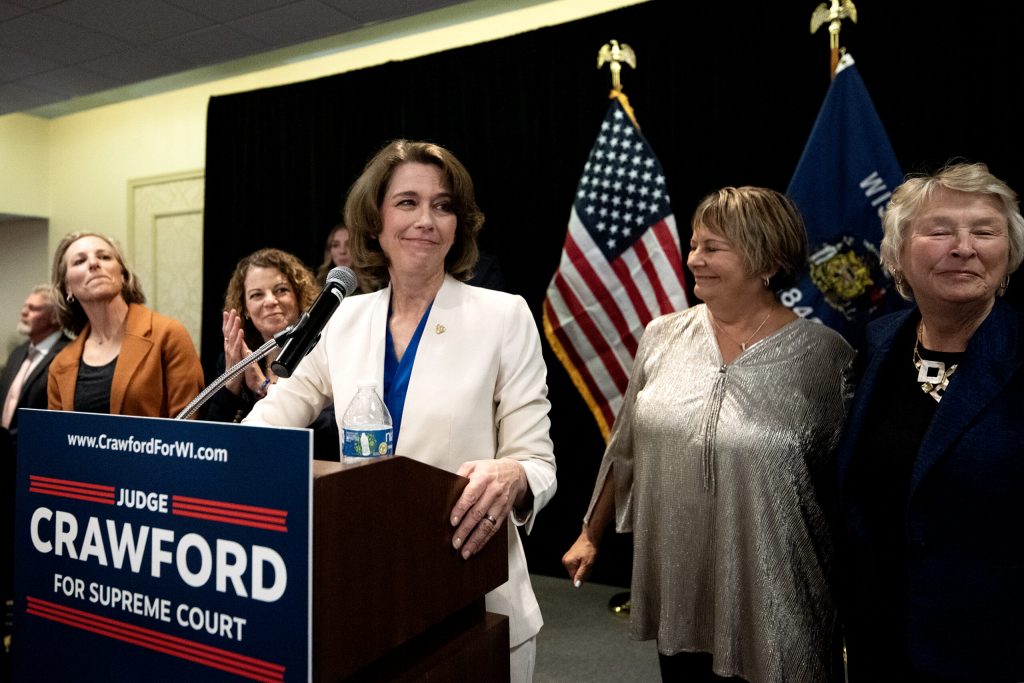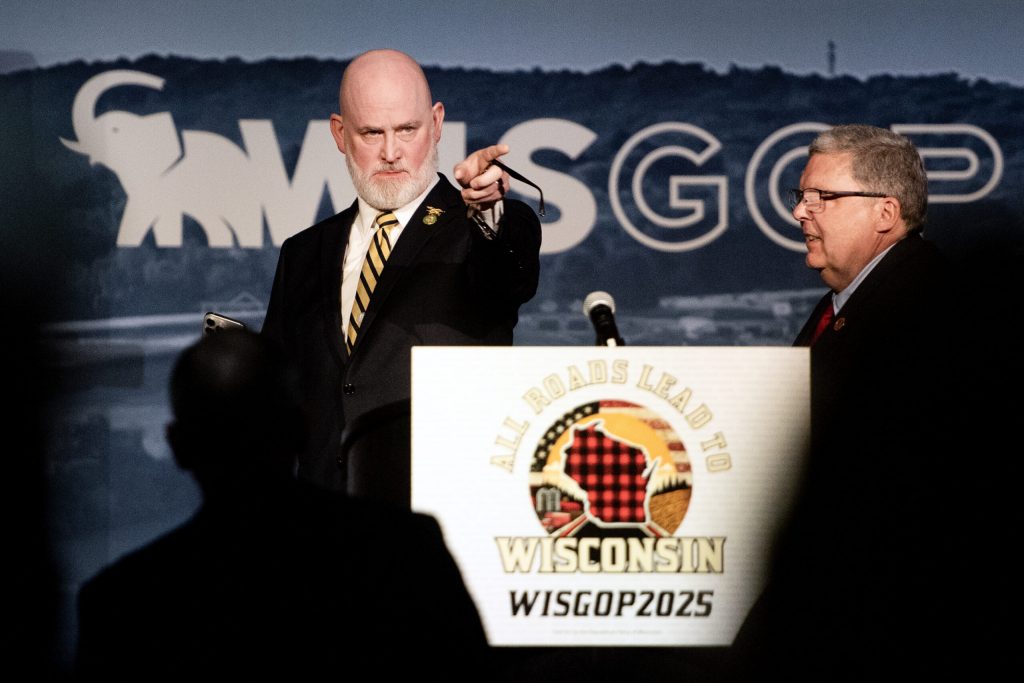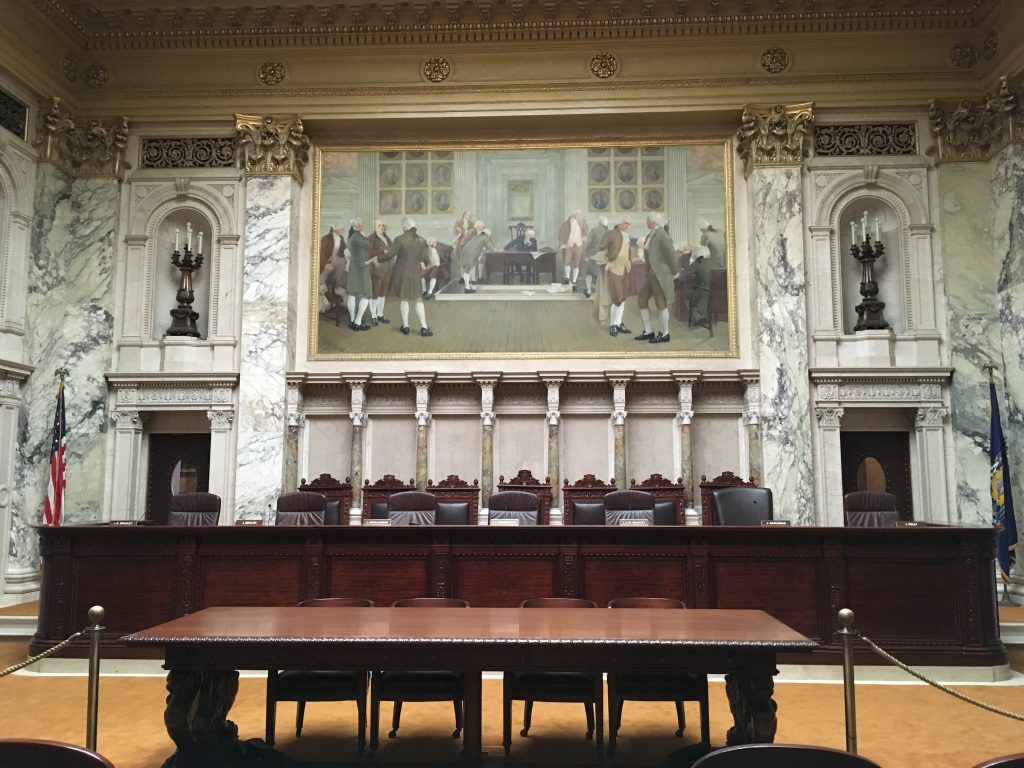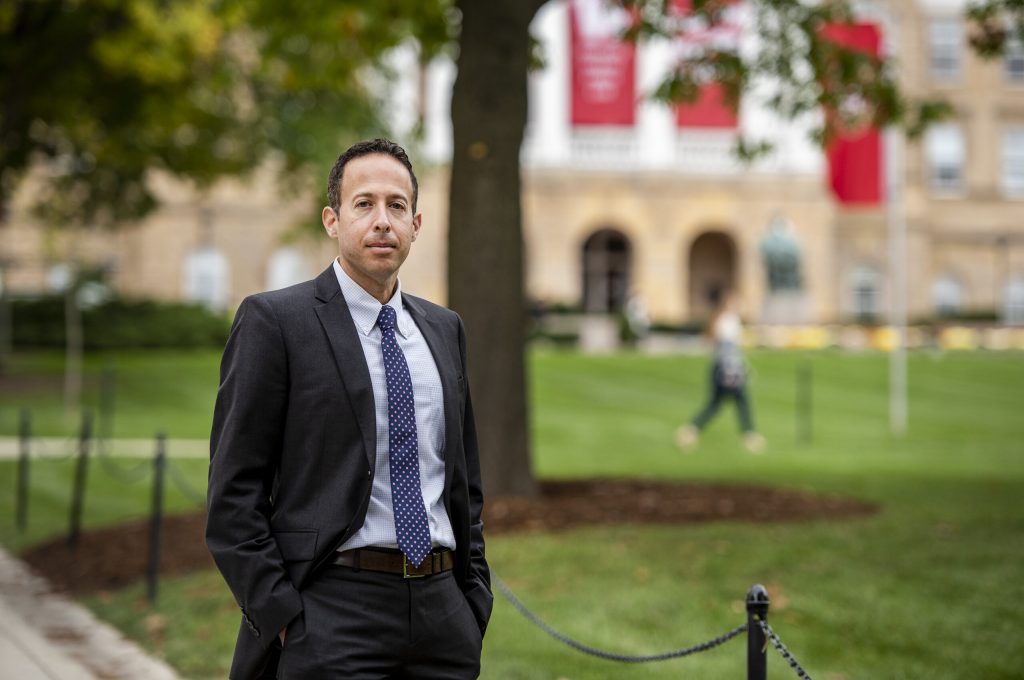Court’s Rejection of Redistricting Lawsuits Yields Many Questions
Court denied lawsuits without explanation, leaving court watchers and political analysts to wonder why, and what comes next.
The Wisconsin Supreme Court didn’t give an explanation when it rejected two lawsuits seeking a redraw of the state’s eight congressional districts this week. That’s left court watchers wondering why, and political analysts wondering what it means for Democrats’ hopes of flipping the U.S. House of Representatives next year.
The two lawsuits were filed in May, around a month after liberals retained their 4-3 majority on the court with the election of liberal Justice-elect Susan Crawford. Both legal challenges claimed the current congressional map in Wisconsin gives an unfair advantage to Republicans, who hold six of the state’s eight U.S. House seats.
Both challenges also focused on the “least changes” directive from the Supreme Court’s former conservative majority in 2021. Under the least changes mandate, the court essentially ordered new maps to be drawn without any major changes to maps favoring the GOP that were passed a decade earlier when Republicans controlled all branches of state government.
But with two unsigned orders released Wednesday afternoon, the Supreme Court declined to hear either lawsuit, leaving the old district lines in place ahead of next years midterm elections.
Only speculation as to why court wouldn’t hear redistricting challenges
University of Wisconsin Law School Professor Robert Yablon, who co-directs the State Democracy Research initiative, told WPR that one can only speculate about why the court didn’t take up the cases. He said it could be that justices felt lower courts are better equipped to handle the factfinding necessary to rule on gerrymandering claims.
Yablon said it’s also possible justices were leery about the U.S. Supreme Court “looking over its shoulder” and potentially overturning any ruling they make on the map guiding elections for federal lawmakers.
“Something else that may be going on is that this ends up being a way for the court to show its independence,” Yablon said. “It may have thought that it just wouldn’t be great for the court’s institutional integrity if it was taking up such a politically charged lawsuit close in time after an election.”
Yablon said there could still be a legal challenge to the congressional map and, according to state law, the Supreme Court could appoint a panel of three circuit court judges to hear the case.
“The same statute says an appeal from any order or decision issued by the panel may be heard by the Supreme Court,” Yablon said, which would put the case back before justices, just by a different path.
Would ‘independent legislature’ theory come into play?
Attorney Lucas Vebber is with the conservative Wisconsin Institute for Law and Liberty, or WILL, which filed legal briefs defending existing congressional maps in both challenges. He said he figured there was a 50/50 chance the Wisconsin Supreme Court’s liberal majority would take up one of the lawsuits, and he’s happy they didn’t.
Vebber said there were significant legal hurdles and practical realities that made it difficult for the court to redraw the congressional districts. One big problem, he argued, is a 2023 ruling from the U.S. Supreme Court stemming from a case called Moore v. Harper, in which the majority opinion said state courts cannot “exceed the bounds of ordinary judicial review” in a way that unconstitutionally intrudes on redistricting powers vested in state legislatures by the U.S. Constitution.
Loyola Marymount Law School Professor Justin Levitt has a different read on the Moore v. Harper case. He doesn’t think it would apply to any redraw of Wisconsin’s congressional map ordered by the Wisconsin court. Levitt said conservatives have unsuccessfully tried to get the U.S. Supreme Court to rule that state courts don’t have any power over House maps enacted by legislatures. He called the warning in the Harper case an “asterisk” that wouldn’t apply to Wisconsin’s map.
“It wouldn’t be for these current congressional districts in Wisconsin because there’s no legislation that anyone can accuse the state Supreme Court of ignoring,” Levitt said.
He said that’s because Wisconsin’s eight congressional districts weren’t drawn by the state Legislature; they were drawn by Gov. Tony Evers and enacted by the Wisconsin Supreme Court’s former conservative majority.
Levitt said more broadly, justices need to see a problem in need of a quick fix before taking up direct legal challenges like the two house map lawsuits.
“It didn’t think there was an urgent enough problem in need of fixing, apparently, to take either of these two cases,” Levitt said.

The Wisconsin Supreme Court listens to arguments from Wisconsin Assistant Attorney General Anthony D. Russomanno, who is representing Gov. Tony Evers, in a redistricting hearing at the Wisconsin state Capitol Building in Madison, Wis., on Tuesday, Nov. 21, 2023. Ruthie Hauge/The Capital Times via AP
Democrats disappointed as political prospects don’t change
Politically speaking, the Supreme Court’s rejection of the cases means Wisconsin’s congressional maps remain the same: less favorable to Democrats.
The party has argued that, in a purple state, it should have at least half of the congressional seats. Instead, Democrats hold just two out of eight House seats.
Without redrawing the maps, the two Republicans sitting in the most competitive seats — Rep. Derrick Van Orden in the 3rd District and Rep. Bryan Steil in the 1st District — are likely safer than they would have been, according to Anthony Chergosky, a political scientist at UW-La Crosse.
“Those were clearly the two U.S. House districts that were targeted by this lawsuit,” he said. “The political ramifications is that we still have six safe U.S. House districts (and) two potentially competitive U.S. House districts.”

U.S. Rep. Bryan Steil stands with the Wisconsin delegation during the second day of the RNC on Tuesday, July 16, 2024, at the Fiserv Forum in Milwaukee, Wis. Angela Major/WPR
The outcome is disappointing for national Democrats, who may have seen an opportunity in swing state Wisconsin, he said. New maps could have made Van Orden and Steil extra vulnerable.
The court’s decision may have also come as a surprise to the national political actors who descended upon Wisconsin during the April state Supreme Court race between conservative Brad Schimel and Crawford. Supporters of both candidates pointed to the possibility of a redistricting lawsuit as a reason for voters and donors to get involved.
During the race, conservatives argued swinging the court back to a conservative majority would stave off Democratic activists looking for a redistricting victory. Liberals argued that keeping the court liberal could open the door for a successful challenge. Neither candidate took a stand on the issue.
But that narrative within the campaign may have overplayed the likelihood that such a challenge could survive the high court’s scrutiny, Chergosky said.
“I thought it was far from certain that the state Supreme Court was going to take this case,” he said. “Some national Democrats almost treated it like a foregone conclusion.”
In the end, Chergosky said, the specter of redrawing Wisconsin’s congressional map may have been more of a “campaign style topic than anything that was a slam dunk legal argument.”

Justice Elect Susan Crawford, center, stands with members of the Wisconsin Supreme Court during her election night event Tuesday, April 1, 2025, at Park Hotel in Madison, Wis. Angela Major/WPR
Cook Political Report House Editor Erin Covey said the court rejecting the redistricting lawsuits “is definitely a win for the Republican Party” at the national level.
“They are defending an incredibly narrow three-seat majority next year in the midterms, and any redistricting development that could alter even just one or two seats could impact control of the House next year,” Covey said.
Still, Covey said, both the 1st and 3rd districts have the potential to be competitive in 2026. She said “on paper,” Steil’s seat should be an easier pickup for Democrats, but Van Orden has “his own baggage” and faces a strong Democratic opponent who has proven to be a strong fundraiser.
“And so because of that, we have Wisconsin’s 3rd District rated as a toss-up,” Covey said.

US Rep. Derrick Van Orden prepares to take a selfie with the crowd at the beginning of his remarks Saturday, May 17, 2025, at the Republican Party of Wisconsin State Convention in Rothschild, Wis. Angela Major/WPR
In a statement sent to WPR, National Republican Congressional Campaign spokesperson Zach Bannon celebrated the court’s denial of the redistricting attempts.
“The bipartisan rejection of the radical Democrats’ desperate and politically motivated attempt to redraw the map in their favor offers a strong preview of how Wisconsin voters will reject the Democrats’ out of touch and radical agenda next year at the ballot box,” Bannon said.
Unpacking the Wisconsin Supreme Court’s rejection of congressional redistricting lawsuits was originally published by Wisconsin Public Radio.
If you think stories like this are important, become a member of Urban Milwaukee and help support real, independent journalism. Plus you get some cool added benefits.
























Every policy intent on increasing one man-one vote, is considered radical to the RRRs (radical reactionary republicans.) What was really radical was the maps drawn in 2011 which gave a purple state a clear majority to Republicans who have shown to be out of touch with their constituents. What is radical is throwing 16 million Americans of healthcare coverage and another 10 million off SNAP, tampering with Social Security and Medicare potentially throwing more seniors into poverty, all to give another massive tax cut to the wealthiest Americans and corporations. That is radical. Frankly, I am sick and tired of paying taxes just so the wealthiest–those with the most resources–don’t have to. That’s the kind of policy banana republics are known for.